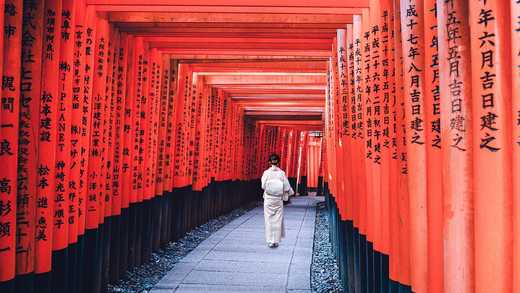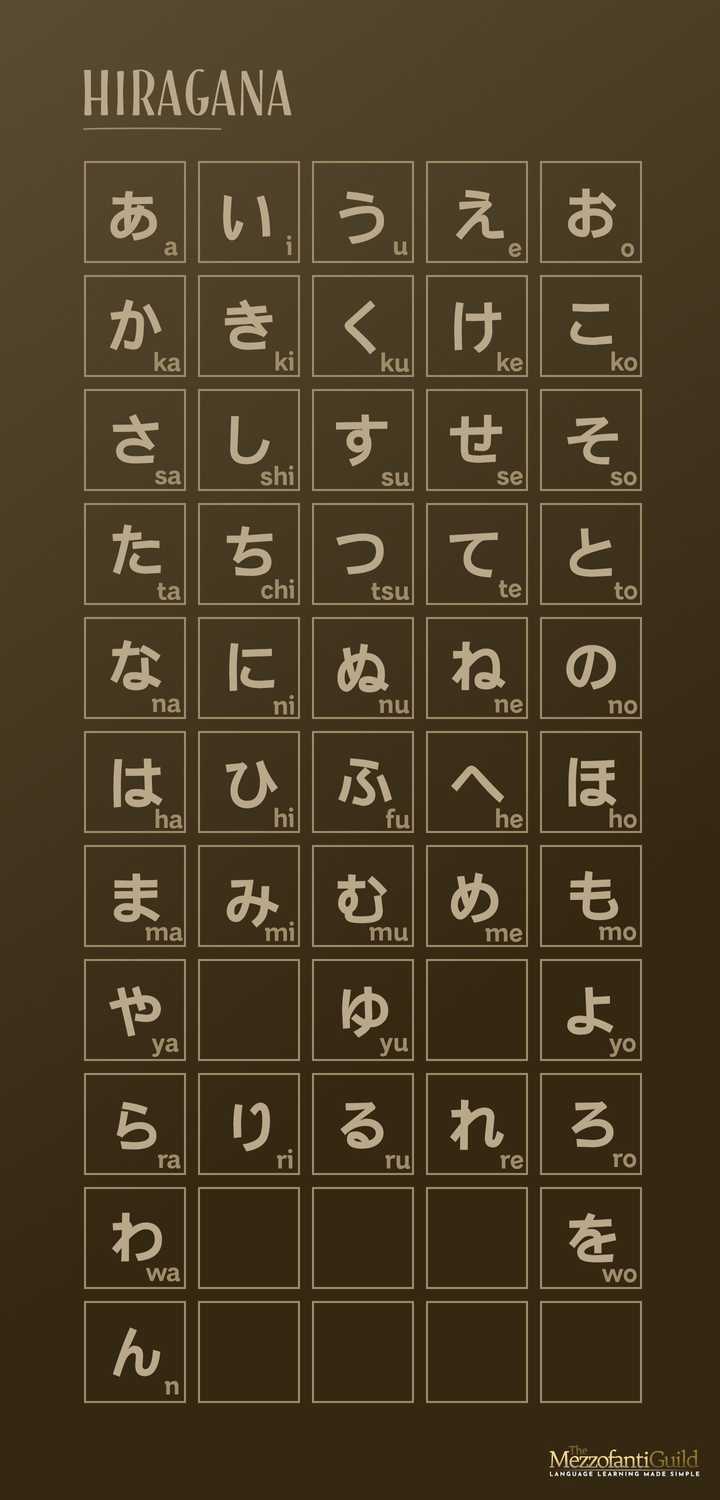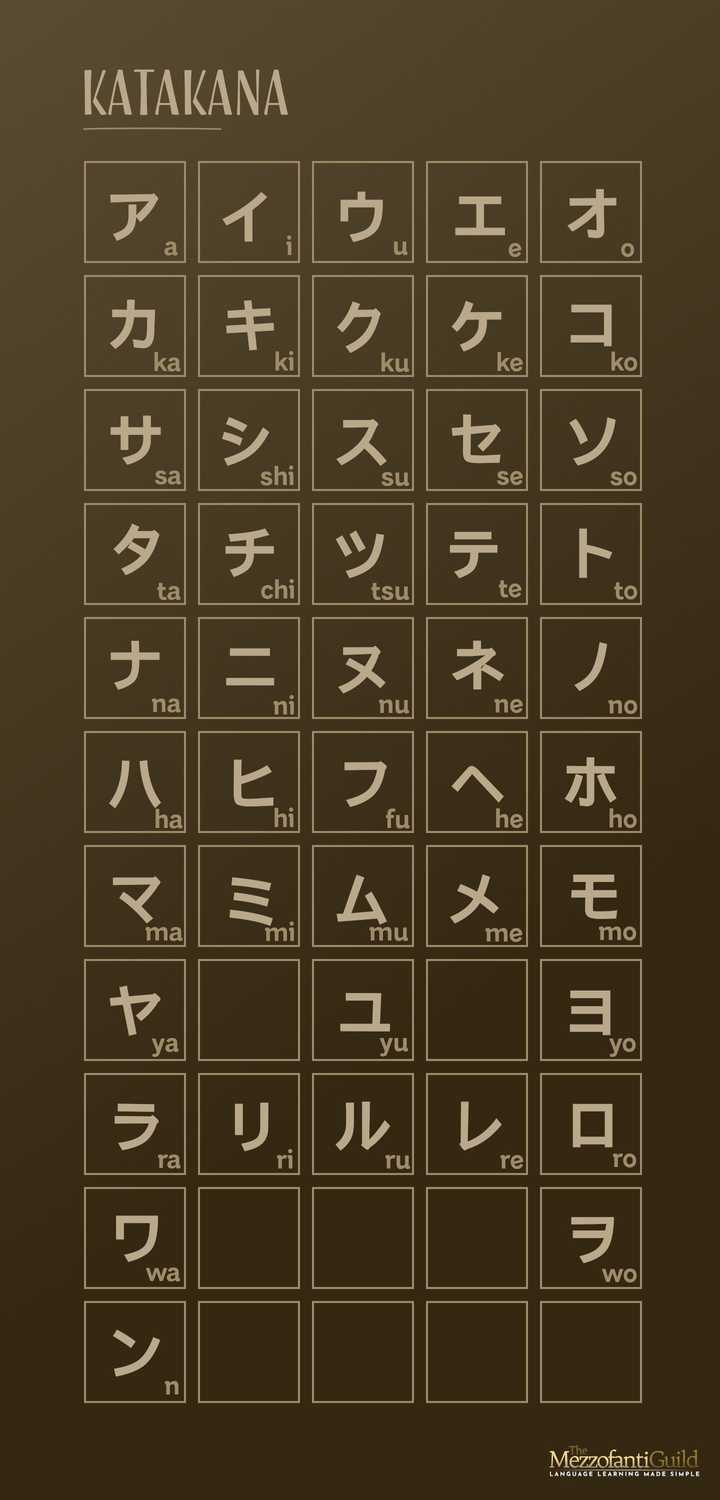Japanese Alphabet: Hiragana, Katakana And Kanji Explained
 Written byIchika Yamamoto
Written byIchika Yamamoto- Read time14 mins
- Comments0

For anyone learning Japanese, you won’t get far without learning the “alphabet”.
In this guide, I’ll explain the Japanese “alphabet” (quotes intended) for you by breaking down the 3 writing systems and how they work.
As you’ll discover, writing Japanese is actually far easier than it looks.
Does Japanese have an alphabet?
Let me just clarify something:
Japanese doesn’t actually have an alphabet. Rather, it has 3 very different writing systems that serve different functions.
These 3 writing systems are called hiragana, katakana and kanji.
While there is technically a 4th system called romaji, it’s not really an official writing system for Japanese (think of it as writing Japanese using English letters). You may find romaji helpful in the beginning while learning the basics, but your goal as a Japanese student is to eventually not need it. 😊
As a new learner, you’ll want to focus your efforts firstly on hiragana, then katakana and finally kanji in this order.
Hiragana, katakana and kanji in a nutshell
Both hiragana and katakana (collectively called kana) represent the same sounds and have a one-to-one correspondence, but they’re used in different contexts and are written differently.
- Hiragana: Cursive and rounded in appearance. It’s usually the first writing system taught to beginners because it’s used in nearly all Japanese sentences. Hiragana’s used for grammatical elements such as particles, verb endings, and some native Japanese words. Additionally, it’s used for words that don’t have kanji or if the author prefers to use hiragana for stylistic or readability reasons.
- Katakana: More angular appearance. It’s used primarily to represent foreign words and names, loanwords, onomatopoeic sounds (mimetic expressions), and sometimes just for emphasis (a bit like italics in English). Katakana’s also preferred for many scientific names.
How many letters are there?
Both hiragana and katakana have 46 basic syllabic characters, with some compound characters. Kanji is a-whole-nother kettle of fish. 😂
You can’t use hiragana and katakana interchangeably even if they have the same sound, as their usage is governed by specific rules and conventions.
- Kanji: Kanji are logographic characters borrowed from Chinese. Unlike hiragana and katakana, which are syllabic scripts (each character represents a syllable much like Korean), each kanji character represents a word or concept.
Kanji’s a challenge for numerous reasons, the main one being that there are literally thousands of them to memorize. It can take years to learn just the most common of them.
The writing systems of Japanese
I’ll go into the 3 systems in more detail below, and provide you with charts of hiragana and katakana.
For obvious reasons, I can’t provide a chart of kanji. You’ll need a separate resource for that.
I recommend this one: Kanji Dictionary for Foreigners Learning Japanese - Akimoto, Miharu & Shiga, Satomi & Natsume-sha (it covers the most important 2,500 kanji).
Hiragana
Here are the 46 basic hiragana characters along with the romaji for pronunciation help.
The first 5 are the vowels.
| HIRAGANA | ROMAJI | AUDIO |
|---|---|---|
| あ | a |  |
| い | i |  |
| う | u |  |
| え | e |  |
| お | o |  |
| か | ka |  |
| き | ki |  |
| く | ku |  |
| け | ke |  |
| こ | ko |  |
| が | ga |  |
| ぎ | gi |  |
| ぐ | gu |  |
| げ | ge |  |
| ご | go |  |
| さ | sa |  |
| し | shi |  |
| す | su |  |
| せ | se |  |
| そ | so |  |
| ざ | za |  |
| じ | ji |  |
| ず | zu |  |
| ぜ | ze |  |
| ぞ | zo |  |
| た | ta |  |
| ち | chi |  |
| つ | tsu |  |
| て | te |  |
| と | to |  |
| だ | da |  |
| ぢ | ji |  |
| づ | zu |  |
| で | de |  |
| ど | do |  |
| な | na |  |
| に | ni |  |
| ぬ | nu |  |
| ね | ne |  |
| の | no |  |
| は | ha |  |
| ひ | hi |  |
| ふ | fu |  |
| へ | he |  |
| ほ | ho |  |
| ば | ba |  |
| び | bi |  |
| ぶ | bu |  |
| べ | be |  |
| ぼ | bo |  |
| ぱ | pa |  |
| ぴ | pi |  |
| ぷ | pu |  |
| ぺ | pe |  |
| ぽ | po |  |
| ま | ma |  |
| み | mi |  |
| む | mu |  |
| め | me |  |
| も | mo |  |
| や | ya |  |
| ゆ | yu |  |
| よ | yo |  |
| ら | ra |  |
| り | ri |  |
| る | ru |  |
| れ | re |  |
| ろ | ro |  |
| わ | wa |  |
| を | wo |  |
| ん | n/m |  |
Here’s an image of the basic hiragana chart:

Katakana
These are the 46 basic katakana characters along with the romaji. As you can see, the pronunciation and number are identical to the chart above.
The first 5 are the vowels.
| KATAKANA | ROMAJI | AUDIO |
|---|---|---|
| ア | a |  |
| イ | i |  |
| ウ | u |  |
| エ | e |  |
| オ | o |  |
| カ | ka |  |
| キ | ki |  |
| ク | ku |  |
| ケ | ke |  |
| コ | ko |  |
| ガ | ga |  |
| ギ | gi |  |
| グ | gu |  |
| ゲ | ge |  |
| ゴ | go |  |
| サ | sa |  |
| シ | shi |  |
| ス | su |  |
| セ | se |  |
| ソ | so |  |
| ザ | za |  |
| ジ | ji |  |
| ズ | zu |  |
| ゼ | ze |  |
| ゾ | zo |  |
| タ | ta |  |
| チ | chi |  |
| ツ | tsu |  |
| テ | te |  |
| ト | to |  |
| ダ | da |  |
| ヂ | ji |  |
| ヅ | zu |  |
| デ | de |  |
| ド | do |  |
| ナ | na |  |
| ニ | ni |  |
| ヌ | nu |  |
| ネ | ne |  |
| ノ | no |  |
| ハ | ha |  |
| ヒ | hi |  |
| フ | fu |  |
| ヘ | he |  |
| ホ | ho |  |
| バ | ba |  |
| ビ | bi |  |
| ブ | bu |  |
| ベ | be |  |
| ボ | bo |  |
| パ | pa |  |
| ピ | pi |  |
| プ | pu |  |
| ペ | pe |  |
| ポ | po |  |
| マ | ma |  |
| ミ | mi |  |
| ム | mu |  |
| メ | me |  |
| モ | mo |  |
| ヤ | ya |  |
| ユ | yu |  |
| ヨ | yo |  |
| ラ | ra |  |
| リ | ri |  |
| ル | ru |  |
| レ | re |  |
| ロ | ro |  |
| ワ | wa |  |
| ヲ | wo |  |
| ン | n/m |  |
Here’s an image of the basic katakana chart:

Combinations
In both hiragana and katakana, there are combinations that must learn too. Not overly complicated, don’t worry!
Here’s a brief summary of what they are (including their names):
濁音 (Dakuon)
Dakuon, or voiced sounds, are a variation of certain characters in both hiragana and katakana. These are represented by adding two small lines, called dakuten, in the top right corner of the character.
For instance, hiragana “か” (ka) becomes “が” (ga), and katakana “カ” (ka) becomes “ガ” (ga). Similarly, hiragana “さ” (sa) becomes “ざ” (za), and katakana “サ” (sa) becomes “ザ” (za).
半濁音 (Handakuon)
Handakuon, or semi-voiced sounds, are a variation of certain characters specifically in the “h” row of both hiragana and katakana. These are represented by adding a small circle, called handakuten, in the top right corner of the character.
For example, hiragana “は” (ha) becomes “ぱ” (pa), and katakana “ハ” (ha) becomes “パ” (pa). Similarly, hiragana “ひ” (hi) becomes “ぴ” (pi), and katakana “ヒ” (hi) becomes “ピ” (pi).
拗音 (Youon)
Youon, or palatalized sounds, are represented in writing by a small “ya”, “yu”, or “yo” following a character ending in “i” in both hiragana and katakana.
This results in a compound syllable. For instance, hiragana “き” (ki) + small “ゃ” (ya) = “きゃ” (kya), and katakana “キ” (ki) + small “ャ” (ya) = “キャ” (kya).
促音 (Sokuon)
Sokuon, or geminate consonants, are represented in writing by a small “tsu” character preceding another character in both hiragana and katakana.
This results in a pause before the next sound, effectively doubling the consonant that follows. For instance, hiragana “さ” (sa) with a small “tsu” before it would be “っさ” and pronounced as “ssa”. In katakana, “サ” (sa) with a small “ツ” before it would be “ッサ” and also pronounced as “ssa”.
長音 (Chouon)
Chouon, or long vowels, are represented differently in hiragana and katakana.
In hiragana, the character for the same vowel sound is usually added. For example, “お” (o) becomes “おお” or “おう” (oo), both pronounced as a longer “o” sound.
In katakana, a horizontal dash is added after the character to denote the long vowel. For instance, “オ” (o) becomes “オー” for a long “o” sound.
Hiragana combinations
| HIRAGANA | ROMAJI | AUDIO |
|---|---|---|
| きゃ | kya |  |
| きゅ | kyu |  |
| きょ | kyo |  |
| ぎゃ | gya |  |
| ぎゅ | gyu |  |
| ぎょ | gyo |  |
| しゃ | sha |  |
| しゅ | shu |  |
| しょ | sho |  |
| じゃ | ja |  |
| じゅ | ju |  |
| じょ | jo |  |
| ちゃ | cha |  |
| ちゅ | chu |  |
| ちょ | cho |  |
| にゃ | nya |  |
| にゅ | nyu |  |
| にょ | nyo |  |
| ひゃ | hya |  |
| ひゅ | hyu |  |
| ひょ | hyo |  |
| びゃ | bya |  |
| びゅ | byu |  |
| びょ | byo |  |
| ぴゃ | pya |  |
| ぴゅ | pyu |  |
| ぴょ | pyo |  |
| みゃ | mya |  |
| みゅ | myu |  |
| みょ | myo |  |
| りゃ | rya |  |
| りゅ | ryu |  |
| りょ | ryo |  |
Katakana combinations
| KATAKANA | ROMAJI | AUDIO |
|---|---|---|
| キャ | kya |  |
| キュ | kyu |  |
| キョ | kyo |  |
| ギャ | gya |  |
| ギュ | gyu |  |
| ギョ | gyo |  |
| シャ | sha |  |
| シュ | shu |  |
| ショ | sho |  |
| ジャ | ja |  |
| ジュ | ju |  |
| ジョ | jo |  |
| チャ | cha |  |
| チュ | chu |  |
| チョ | cho |  |
| ニャ | nya |  |
| ニュ | nyu |  |
| ニョ | nyo |  |
| ヒャ | hya |  |
| ヒュ | hyu |  |
| ヒョ | hyo |  |
| ビャ | bya |  |
| ビュ | byu |  |
| ビョ | byo |  |
| ピャ | pya |  |
| ピュ | pyu |  |
| ピョ | pyo |  |
| ミャ | mya |  |
| ミュ | myu |  |
| ミョ | myo |  |
| リャ | rya |  |
| リュ | ryu |  |
| リョ | ryo |  |
Kanji
As I mentioned above, giving you a chart of every kanji is way beyond the scope of this guide. There are literally thousands of them.
Here are two points that you should know:
- Most Japanese people don’t know every single Kanji so don’t beat yourself up for not knowing them all.
- Out of the many thousands of characters, you only need to learn a fraction of them to have a functional, proficient grasp of kanji.
- Kanji are something you can acquire over time. There is no urgent need to become a kanji master so take your time with it.
I mentioned a great book above that’ll help you learn 2,500 kanji (more than enough!). There are also some excellent online resources which you can see a list of here.
The Japanese “alphabet” is easy
Okay, so there’s no such thing as the Japanese “alphabet”.
Only 3 systems of written communication that each play an important role. Two of them are syllabic and easy to learn, much like Korean, while the other is logographic and will take years to acquire (but there’s no urgent need to master it).
🎓 Cite article
 Grab the link to this article
Grab the link to this article
Japanese Resources:
Let me help you learn Japanese
JOIN THE GUILD:

Donovan Nagel - B. Th, MA AppLing
I'm an Applied Linguistics graduate, teacher and translator with a passion for language learning (especially Arabic).

















 Arabic Resources
Arabic Resources Spanish Resources
Spanish Resources French Resources
French Resources Italian Resources
Italian Resources German Resources
German Resources Mandarin Chinese Resources
Mandarin Chinese Resources Hindi Resources
Hindi Resources Portuguese Resources
Portuguese Resources Korean Resources
Korean Resources Japanese Resources
Japanese Resources Russian Resources
Russian Resources











COMMENTS
NO ADVERTISING. Links will be automatically flagged for moderation.